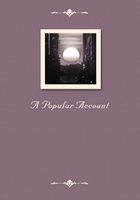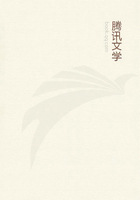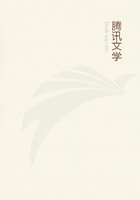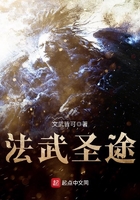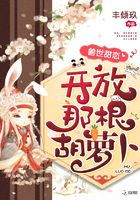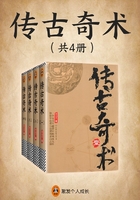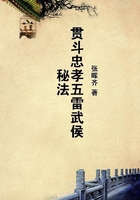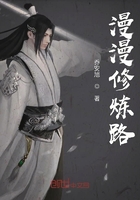The original God, the origin of all things, manifests himself to men, in lesser forms, according to this mythology, more and more human and less and less intangible. These forms are generally triads, and resolve themselves into a male deity, a female deity, and their child. Triad after triad brings the original Divinity into forms more and more earthly, till at last we find "that we have no longer to do with the infinite and intangible God of the earliest days, but rather with a God of flesh and blood, who lives upon earth, and has so abased himself as to be no more than a human king. It is no longer the God of whom no man knew either the form or the substance: it is Kneph at Esneh, Hathor at Durderah, Horus, king of the divine dynasty at Edfoo." These words are M. Maspero's.
The Greek and Latin poets and philosophers, as they made some very slight acquaintance with Egyptian worship, give Greek or Latin names to the divinities worshipped. Thus we sometimes hear Osiris spoken of as the Egyptian Hermes. But such changes of names are confusing, and are at best but fanciful (In the same way Plutarch, a Greek writer, says of the Jews' Feast of Tabernacles, "I know that their God is our Bacchus." This was merely from the vines, vine leaves and wine used in the ceremonies.) It would happen sometimes, in later times, that a fashion of religion would carry the worship of one God or Goddess to a distance. Thus the worship of Isis became fashionable in Rome in the time of Nero and Paul, as readers of Bulwer's Last Days of Pompeii will remember.
The latest modern literature occasionally uses the Egyptian names, as the last two centuries have disinterred them from the inscriptions on the monuments, and from the manuscripts in the tombs. Earlier English writers generally use the names like Osiris, Anubis, and others found in Latin and Greek writers.
The following statement as to these deities and their names is from Mr. Birch:
"The deities of ancient Egypt consist of celestial, terrestrial, and infernal gods, and of many inferior personages, either representatives of the greater gods or attendants on them. Most of the gods were connected with the sun, and represented that luminary through the upper hemisphere or Heaven and the lower hemisphere or Hades. To the deities of the solar cycle belonged the great gods of Thebes and Heliopolis. In the local worship of Egypt the deities were arranged in local triads; thus at Memphis, Ptah, his wife Merienptah, and their son Nefer Atum, formed a triad, to which was sometimes added the goddess Bast or Bubastis.
At Abydos the local triad was Osiris, Isis, and Horus, with Nephthys; at Thebes, Amen Ra or Ammon, Mut and Chons, with Neith;at Elephantine, Kneph, Anuka, Sati, and Hak. In most instances the names of the gods are Egyptian; thus, Ptah meant 'the opener'; Amen, 'the concealed'; Ra, 'the sun or day'; Athor, 'the house of Horus';' but some few, especially of later times, were introduced from Semitic sources, as Bal or Baal, Astaruta or Astarte, Khen or Kiun, Respu or Reseph. Besides the principal gods, several inferior or parhedral gods, sometimes personifications of the faculties, senses, and other objects, are introduced into the religious system, and genii, spirits or personified souls of deities formed part of the same. At a period subsequent to their first introduction the gods were divided into three orders. The first or highest comprised eight deities, who were different in the Memphian and Theban systems.
They were supposed to have reigned over Egypt before the time of mortals. The eight gods of the first order at Memphis were 1.
Ptah; 2. Shu; 3. Tefnu; 4. Seb; 5. Nut; 6. Osiris; 7. Isis and Horus; 8. Athor. Those of Thebes were 1. Amen Ra; 2. Mentu; 3.
Atum; 4. Shu and Tefnu; 5. Seb; 6. Osiris; 7. Set and Nepthys; 8.
Horus and Athor. The gods of the second order were twelve in number, but the name of one only, an Egyptian Hercules, has been preserved. The third order is stated to have comprised Osiris, who, it will be seen, belonged to the first order." GUIDE TO THEFIRST AND SECOND EGYPTIAN ROOMS, BRITISH MUSEUM. S. Birch Miss Edwards gives the following convenient register of the names most familiar among the Egyptian gods (in her very interesting book, "A Thousand Miles up the Nile").
PHTAH or PTAH: In form a mummy, holding the emblem called by some the Nilometer, by others the emblem of Stability, called "the father of the Beginning, the Creator of the Egg of the Sun and Moon," Chief Deity of Memphis.
KNEPH, KNOUM or KNOUPHIS: Ram-headed, called the Maker of gods and men, the Soul of the gods. Chief Deity of Elephantine and the Cataracts.
RA: Hawk-headed, and crowned with the sun-disc, encircled by an asp. The divine disposer and organizer of the world; adored throughout Egypt.
AMEN RA: Of human form, crowned with a flat-topped cap and two long, straight plumes; clothed in the schenti; his flesh sometimes painted blue. There are various forms of this god (there were almost as many varieties of Ammon in Egypt as there are varieties of the Madonna in Italy or Spain), but he is most generally described as King of the Gods, chief deity of Thebes.
KHEM: Of human form, mummified; wears head-dress of Amen Ra; his right hand uplifted, holding a flail. The god of productiveness and generation. Chief deity of Khemmis, or Ekhmeem.
OSIRIS: Of human form, mummified, crowned with a mitre, and holding the flail and crook. Called the Good; the Lord above all; the one lord. Was the god of the lower world; judge of the dead; and representative of the sun below the horizon. Adored through Egypt. Local deity of Abydos.
NEFER ATUM: Human-headed, and crowned with the pschent. This god represented the nocturnal sun, or the sun lighting the lower world. Local deity of Heliopolis.
THOTH: In form a man, ibis-headed, generally depicted with the pen and palette of a scribe. Was the god of the moon, and of letters. Local deity of Sesoon, or Hermopolit.

